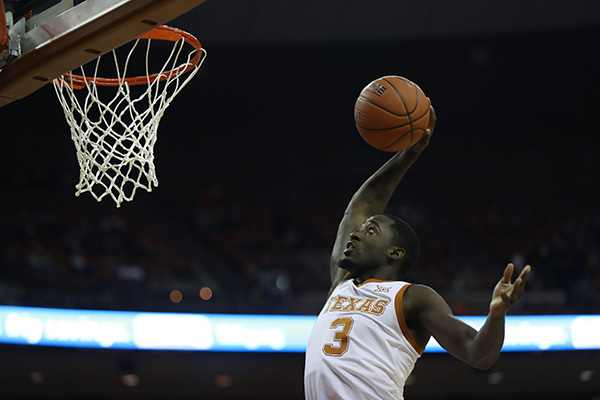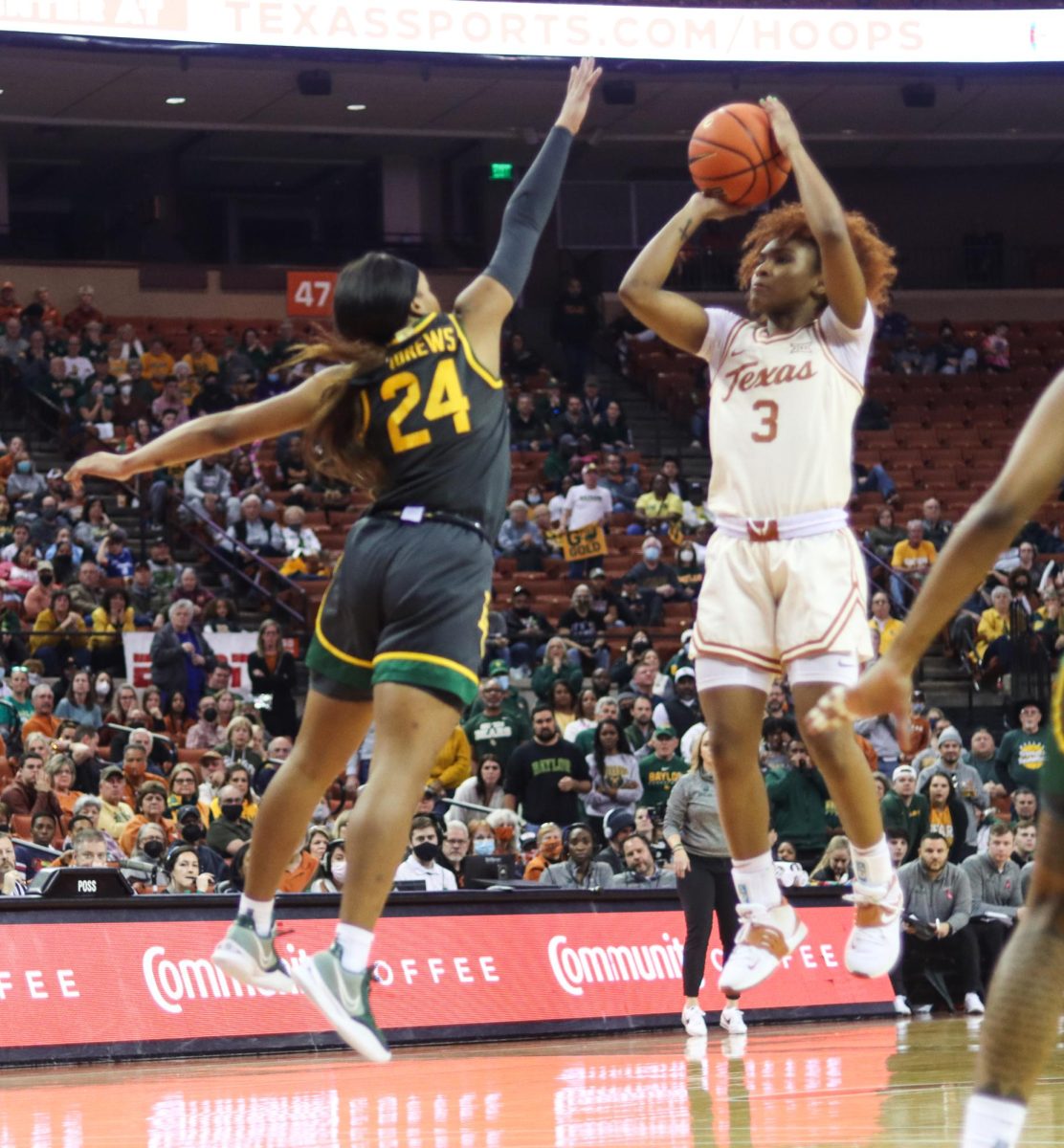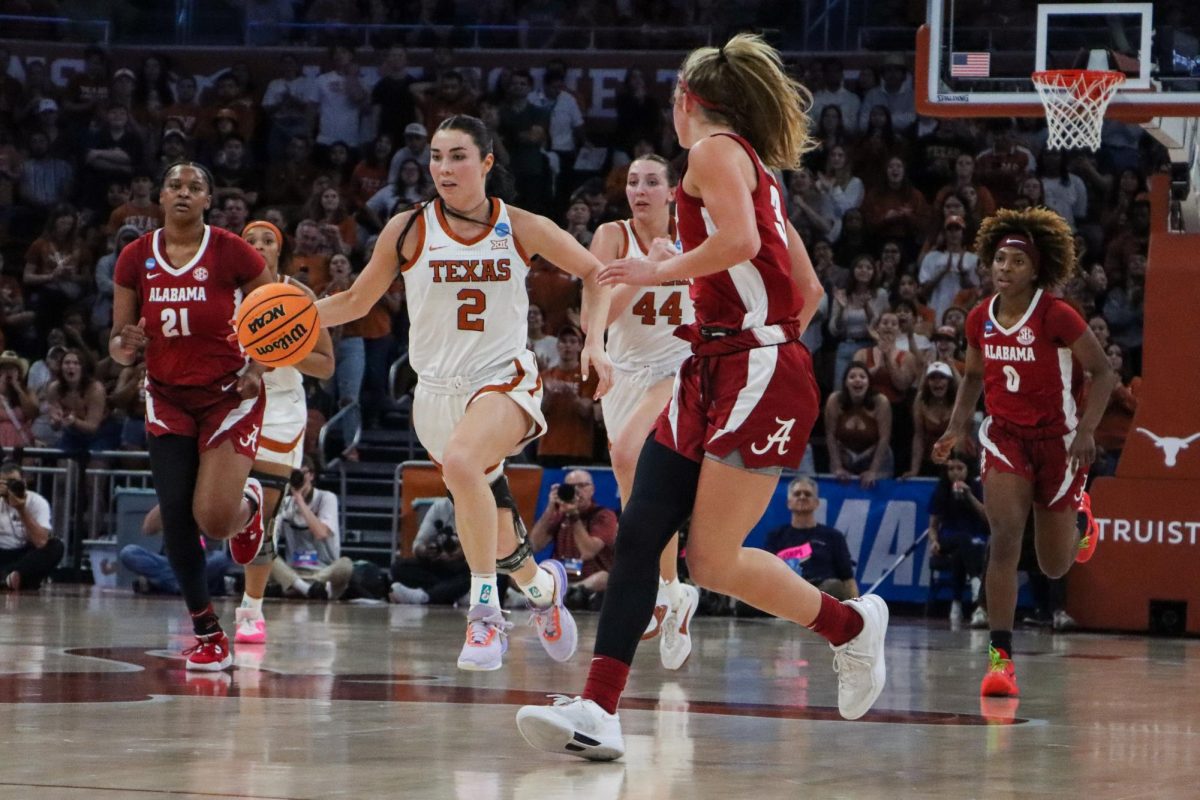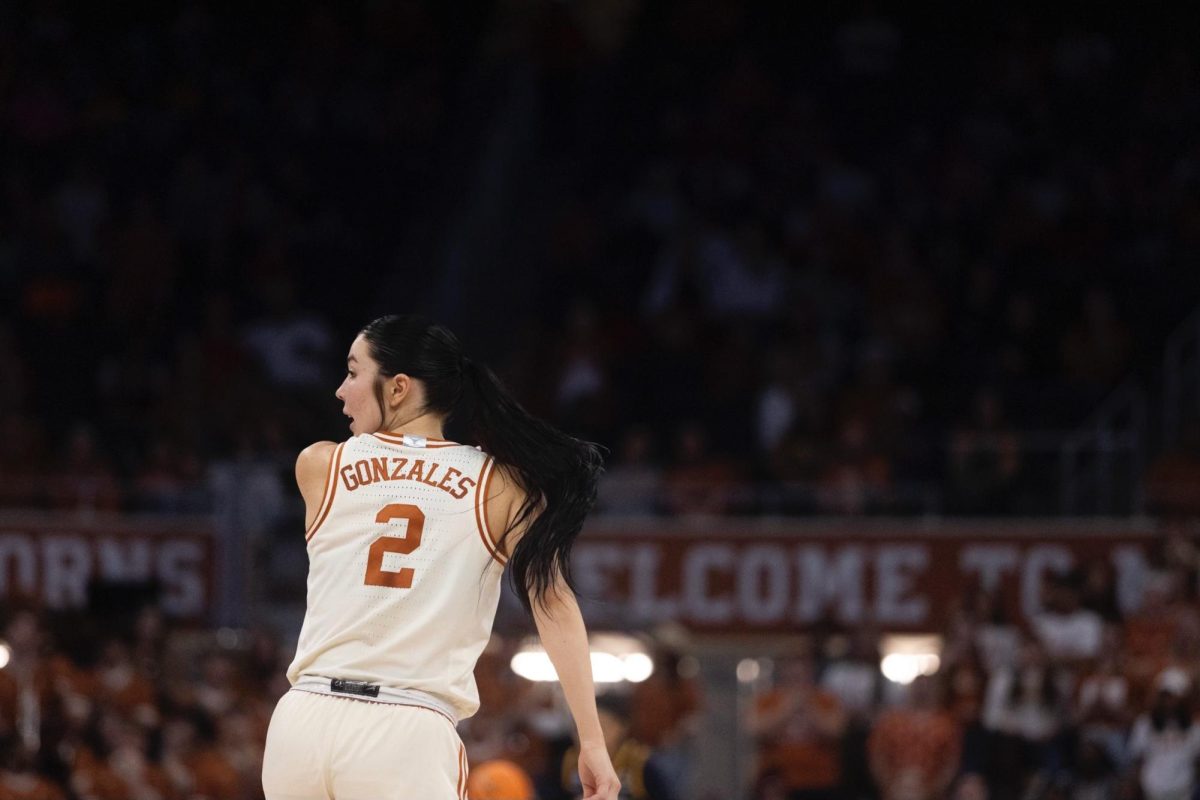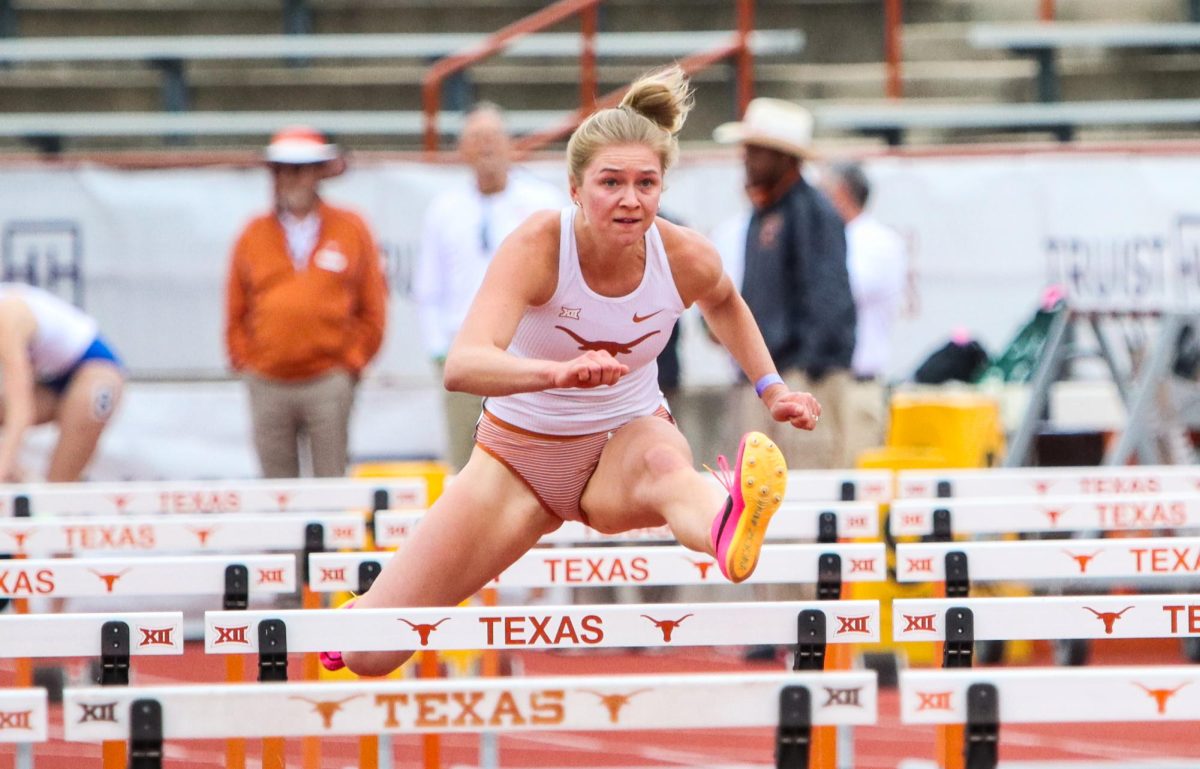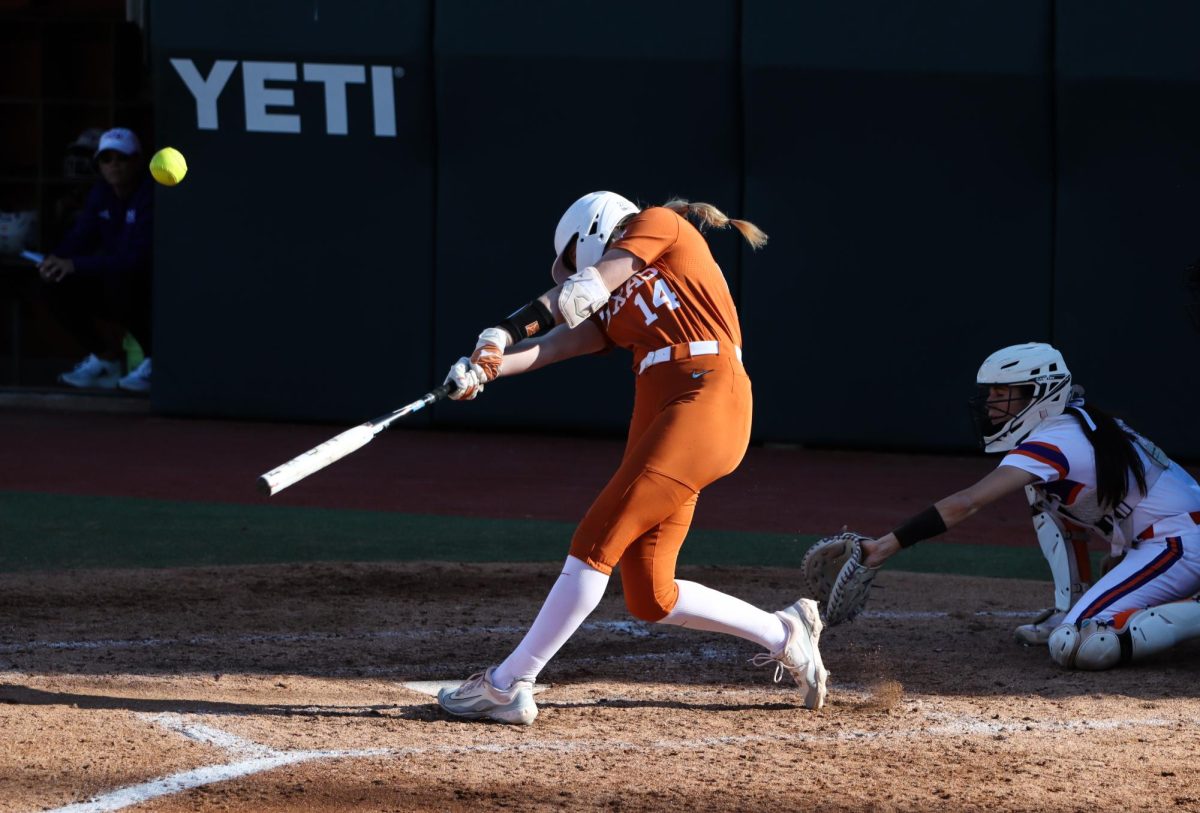With the #FireShaka buzz arguably at its peak after three straight losses in Big 12 play, Texas basketball needed a win in Fort Worth against TCU. Thanks to a timely 3-pointer by junior guard Jase Febres, the unhappy contingent of fans were silenced temporarily, but it is never just one play that wins basketball games. Here’s a look at the positive takeaways from Texas basketball’s 62-61 victory Wednesday that snapped Texas’ three-game losing streak and potentially started a turnaround for the Longhorns.
Spreading the ball around
The biggest surprise was the life and energy that Texas showed. Almost 74% of the Longhorns’ made baskets were assisted, a top-five mark for the season. It is no secret that better ball movement usually increases the quality of an offense, but for some reason Texas has not consistently stuck to this mantra. When the Longhorns stray from a consistently flowing offense, they struggle to create anything efficiently as they are just 2–4 this season when they fail to reach the 10-assist mark.
Texas in transition
Texas’ aggressiveness started in transition, attacking straight through the defense when the opportunity presented itself. Junior guard Matt Coleman’s outlet to freshman wing Donovan Williams drew the attention of every TCU defender, allowing sophomore guard Courtney Ramey to run unimpeded to the rim. TCU failed to recognize the cutter and found itself giving up an easy layup in the heart of their defense.
Another example of the benefits of solid transition play came just a few minutes later, when Coleman’s change-of-pace crossover caught TCU off guard and created a lob opportunity for freshman forward Kai Jones to slam it down with authority.
Half court offense
The Longhorns were not just productive on fast breaks. Just look how much better Texas’ half court offense is running when it’s based on off-ball movement. Before the play starts, the four players that do not have the ball all do something significant, whether that be relocating or setting a screen, putting the defense on its heels. From here, a series of dribble handoffs ensue, leading to a drive and dish to Ramey for a lay in.
This improved offensive flow also led to more open jump shots. This season, Texas’ success has often been dependent on its 3-point accuracy. The Longhorns, who are shooting 34% from three this season, are 7–0 when they make at least 40% of their shots from deep. It’s not just the fact that they are making shots — the Longhorns are moving the ball better and getting better looks. Wednesday’s contest was a prime example of this, as Texas knocked down 11 of its 22 3-pointers, their second best 3-point shooting game of the season.
The noticeable improvements within the half court began on the Longhorns’ second offensive possession. The play started innocently enough, with Coleman giving the ball up to Ramey before faking a move to the right wing and receiving a screen from Jericho Sims. Usually, the guard who receives the screen comes up to the top of the key and sets up a pick and roll, but instead Coleman ended up doing a mini curl before fading to the left corner. While TCU did not fall for the change, they momentarily took their eyes off Coleman. Meanwhile, a strong V cut from Ramey led to a give and go between him and Sims, forcing Coleman’s defender to step up so as to prevent an open mid range shot. This play left Coleman wide open to receive Ramey’s pass and knock down a three. If we’re being critical, a little something on the backside between Jase Febres and Kai Jones would be nice, but the end product is still so much better than previous games, which featured so much monotony that it was a struggle to watch.
Another nice play occurred near the end of the first half. Febres came up from the paint and faked a ball screen, instead running to the wing off a flare screen from Sims, causing his defender to freeze and stay on the ball handler, which was Coleman in this case. Sims’ screen prevented the TCU defender from having any remote chance of contesting a shot, leaving Febres available to knock down the final bucket of the half.
Not all of the made shots were a byproduct of the improved ball movement. The Horned Frogs just aren’t on the same defensive level as the likes of West Virginia, Kansas or Baylor, and it allowed Texas to get away with a few things that it might not have in previous games. TCU’s freshman guard PJ Fuller completely ignored Andrew Jones after he slung a pass while falling out of bounds, allowing him to knock down a wide open three as the shot clock wound down.
Before we move on to the defensive side of the ball, I want to take a moment to highlight Jase Febres and Courtney Ramey’s play Wednesday. They were arguably the biggest recipients of the upgraded spacing and movement, and it shows in the box score with the guards dropping 15 and 12 points respectively (both shooting 5-for-7 from the field). I think it is safe to call these two the squad’s X-Factors. Texas is 7-0 when Febres shoots at least 45% from the field, and undefeated in Ramey’s six games when he hits at least 50% of his shots.
Defense
Defensively, Texas’ biggest change was preventing too many trips to the foul line. Over their three-game losing streak, the Longhorns gave up an average of 24.3 free throw attempts per game, including a season-high 32 against West Virginia on Jan. 20.
On Wednesday, the communication seemed better, rotations were more crisp and defenders seemed to be doing a better job of making things uncomfortable for TCU without fouling. What helped was the utilization of head coach Shaka Smart’s vaunted “Havoc” 1-2-1-1 full court press that was popular during his time at VCU, which Texas seemed much more willing to use for stretches, but still have the wherewithal to get back in defensive positioning.
Often, the main issue of a press is that players don’t always get set after a made basket. Here, the Longhorns wasted no time getting into their press. While the Horned Frogs break the press relatively easily, Texas’ defense did a great job of beating the fast break, neutralizing the threat of an easy basket. Once in the half court setting, Sims stifled a baseline drive twice — once in transition and once in the half court, forcing a pass out to a contested three that missed its mark. Possessions such as these used to result in bailout fouls as the Longhorn defense ran around with little organization. Wednesday, you saw the foundations of a team that could wreak havoc with their versatility. The Texas coaching staff did a good job of utilizing the press at the right times Wednesday, which could give the team a card in the pocket for future tightly contested games.
Again, Texas is nowhere close to perfect, nor should we expect it to be based on what the team has shown throughout the year. However, the improvements that the Longhorns made for Wednesday bode well as Texas makes a desperate push for an NCAA tournament berth. If the team builds on their ball movement and defensive discipline, do not be shocked if the Longhorns make things interesting as Big 12 play winds down.



